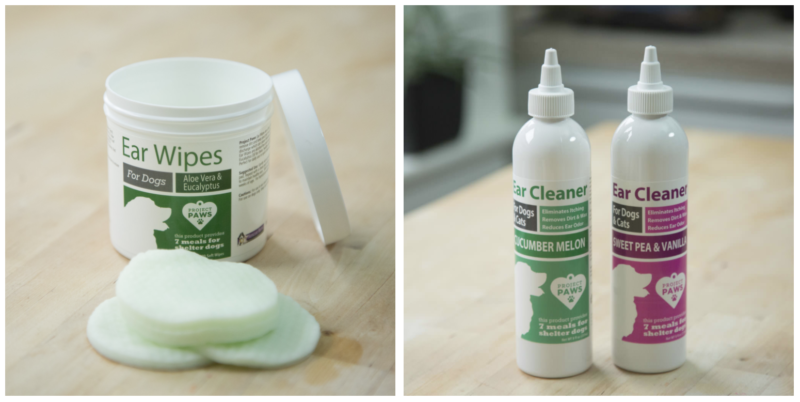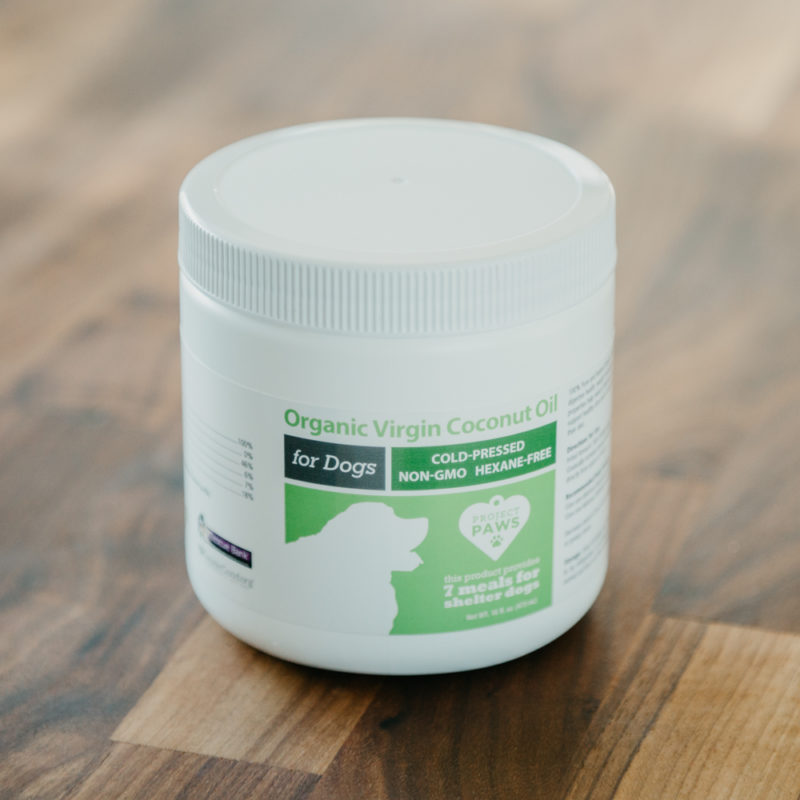Sabado, Oktubre 28, 2017
When Your Sweet Dog Wanted To Join You While Working
Watch on YouTube here: When Your Sweet Dog Wanted To Join You While Working
Via https://www.youtube.com/channel/UCrTpN0pjaKZSg5mkA-Z3-bA/videos
Biyernes, Oktubre 27, 2017
Met Chucky's Pomterrier Frenemy: Quincy
Watch on YouTube here: Met Chucky's Pomterrier Frenemy: Quincy
Via https://www.youtube.com/channel/UCrTpN0pjaKZSg5mkA-Z3-bA/videos
Huwebes, Oktubre 26, 2017
Dog Training: Behind The Scene
Watch on YouTube here: Dog Training: Behind The Scene
Via https://www.youtube.com/channel/UCrTpN0pjaKZSg5mkA-Z3-bA/videos
Dog Training: Sit & Stay
Watch on YouTube here: Dog Training: Sit & Stay
Via https://www.youtube.com/channel/UCrTpN0pjaKZSg5mkA-Z3-bA/videos
Miyerkules, Oktubre 25, 2017
Sleeping Dog
Watch on YouTube here: Sleeping Dog
Via https://www.youtube.com/channel/UCrTpN0pjaKZSg5mkA-Z3-bA/videos
Lunes, Oktubre 23, 2017
Funny Dog in Heat
Watch on YouTube here: Funny Dog in Heat
Via https://www.youtube.com/channel/UCrTpN0pjaKZSg5mkA-Z3-bA/videos
Linggo, Oktubre 22, 2017
What Are Ear Hematomas In Dogs?


Should something cause the vessels in your dog’s ears to rupture, the bleeding can form fluid-filled sacs called hematomas. Hematomas are common in dogs with floppy ears, but dogs of any breed can get them, regardless of what kind of ears they have. They’re usually pretty easy to see, and a quick trip to your vet can confirm whether or not they’re hematomas.
Ear hematomas come in various sizes on the concave (inside) surface of your dog’s ear. Doctors aren’t entirely sure what causes them, but the main cause is thought to be head shaking or ear scratching due to itching. They’re frequently found alongside ear infections, as your dog may fuss with his ears when they’re in pain.
Symptoms of Ear Hematoma in Dogs
Hematomas are soft, fluid-filled swellings that may occur on just one or both ears and will be visible to the naked eye. The affected part of the ear flap will feel similar to pressing (gently!) on a water balloon. They can become so large that the opening of the ear canal may be blocked. Ear hematomas can be uncomfortable for your dog due to the extra weight on his ear flap – and it can lead to permanent change in the shape of his ears. Take note if your dog is shaking his head or scratching his ears.
Causes of Ear Hematoma in Dogs
– Otitis externa and trauma – It’s thought that head shaking due to the discomfort of an ear infection can lead to trauma in a dog’s ear. Head shaking can cause vessel rupture and hematoma formation. However, many hematomas have been found in cases where there is no ear disease or trauma, and there have been cases of extreme ear infection or itching that don’t cause hematomas.
– Autoimmunity – In 1986 researchers investigated the causes of ear hematoma formation in 40 dogs. J. Kuwahara proposed that ear hematomas could be due to an immune mediated process. However, there has been evidence to disprove this theory as well.
Diagnosis of Ear Hematoma in Dogs
You vet can diagnose an ear hematoma based on the soft, fluid filled sacs that will be present on your dog’s ear. They will take a sample of the fluid inside of the swelling using a fine needle aspiration to make their diagnosis. It’s also important to diagnose what has caused the condition. Ear infection can be detected if there’s a bad odor to your dog’s ears, excessive secretion, or inflammation. A bacterial culture and other lab analysis may be used to determine what’s causing the ear infection and choose the best treatment option for your dog.
Treatment of Ear Hematoma in Dogs
Ear hematomas will usually call for surgery. It requires general anesthesia, and will consist of making an incision in the ear to drain the fluid that has collected between the skin and ear cartilage. Sutures are placed along the line of the incision to minimize the change of damaging the blood vessels and help the skin adhere to the ear cartilage. The incision will remain open, though, to allow drainage. Some vets will place a pressure wrap for a week to promote further drainage and prevent fluid from collecting in the ear again. Expect sutures to be removed 2 – 3 weeks after surgery. Your vet will prescribe pain medication, antibiotics, and other medication to treat ear infection if your dog has one.
Surgery for ear hematomas is relatively safe and most dogs heal without any trouble, but there are some risks same as any other surgery. Early diagnosis and intervention ensures a good outcome so it is essential to contact the veterinarian as soon as you observe signs of ear hematoma.
Recovery of Ear Hematoma in Dogs
After surgery, your vet should give you instructions for postoperative care and monitoring your dog’s healing at home. They may recommend cleaning and drying the area, and treating with appropriate medication, massaging out any fluid that accumulates, using an e-collar, and treating ear infection.
Recurrence is more likely if an underlying ear infection is not treated and controlled. Once a hematoma has formed in one ear, the other ear should be closely examined for ear infection.
Aspin (Chucky) vs T-Rex (Dinosaur) r2
Watch on YouTube here: Aspin (Chucky) vs T-Rex (Dinosaur) r2
Via https://www.youtube.com/channel/UCrTpN0pjaKZSg5mkA-Z3-bA/videos
Sabado, Oktubre 21, 2017
Skipping This Weekly Chore Can Mean Extra Trips To The Vet And Unnecessary Pain For Your Dog

When you’ve finished brushing your dog’s fur and cleaning her teeth, there’s still one more task you need to accomplish… Cleaning your dog’s ears is something that is often forgotten but always important. Like humans, dogs rely on this basic form of hygiene to prevent serious medical issues. Wax, dirt, and other types of debris can build up in your dog’s ear canals. Continually missing out on cleanings could lead to a painful situation for your pup.

Bacterial Infections
The biggest threat to your dog’s ear health is a bacterial infection. Dirt gets caught in excess ear wax and turns the insides of a pup’s ears into the perfect breeding ground for bacteria and yeast. Dogs with floppy ears are especially at risk, because the restricted air flow prevents their ears from drying when they’re wet. If you’ve ever had an ear infection, you know they’re extremely painful. Dogs can’t tell you when an infection sets in, and it may be several days before you realize they’re in pain. Treating an ear infection is never an easy process, and the best strategy is to practice preventative care in order to avoid them all together.

Ear Mites
Picturing tiny white parasites crawling in your dog’s ears should be all the motivation you need to commit to weekly ear cleanings. Ear mites survive on ear wax and other oils found in the ear. In extreme cases, they cause serious ear infections. You won’t be able to tell whether or not your dog has mites by staring into their ear, because the annoying pests are too small to see. They’re also contagious and spread to other animals (even humans) through brief contact. Once they infest your dog’s ears, it’ll be a long process involving prescribed medication to finalize their eviction. They won’t have a chance to settle in, however, when their would-be-home is consistently cleaned!
The biggest hurdle keeping dog owners from providing the best care to their pets is the fact that cleaning a dog’s ears isn’t always easy. Dogs don’t always appreciate it when you put your fingers in their ears, but two products from the Project Paws® line of complete canine healthcare will help. Ear Wipes for Dogs with Aloe Vera & Eucalyptus make cleaning your dog’s ears fast and easy. The disposable wipes are alcohol-free, and all you have to do is wipe the inside of your dog’s ears to remove dirt. For dogs with sensitive ears, the Project Paws® Canine Ear Cleaner with Aloe Vera prevents the buildup of wax and dirt while soothing itching. Every Project Paws® purchase comes with the Project Paws Promise 90-day money-back guarantee and, as always, provides meals to shelter dogs in need.
These statements have not been evaluated by the Food and Drug Administration. This product is not intended to diagnose, treat, cure, or prevent any disease. The information on this website is not intended to replace a one-on-one relationship with a qualified healthcare professional.
Tips For Helping Dogs With Sensitive Stomachs
Sheriff’s Office Hires Adorable Therapy Dog To Comfort Crime Victims

Meet Lily, a 5-year-old Beagle/Corgi mix who was rescued from a kill shelter in Florida. She was then enrolled in the Brevard County Sheriff’s Office’s “Paws & Stripes College,” a program where inmates train rescued dogs to be PTSD dogs, therapy dogs, or child victim advocate dogs. She’s now moved on to assisting crime victims.
After graduating from Paws and Stripes’s Law Enforcement Investigative Therapy Dog Course, she was given to the Marion County Sheriff’s Office (MCSO) for free to help comfort victims of violent or sensitive crimes.
Lily came to the MCSO in May 2017 and has since become a fully certified therapy dog and has been working out in the community.
Lily and her handler, Detective Janeen Henley-Freeman who’s MCSO’s Department of Children and Families (DCF) Investigative Liaison, mostly focus on assisting with the victims of adult and children DCF investigations, missing persons, sex crimes, child abductions, and child exploitation internet crimes.
Marion County Sheriff Billy Woods has already seen the benefit of working with Lily. According to him:
“We’ve seen an enormous difference since we began using Lily to help us with our more sensitive investigations. We’ve had children who have experienced horrific crimes open up to us because Lily made them feel comfortable. When Lily walks into a room, she brings a sense of joy and comfort with her, and we know she will make a tremendous difference in the lives of our crime victims in Marion County.”
Your Dog’s Facial Expressions Might Not Mean What You Think They Do

When it comes to reading human facial expressions, there are a few set guidelines. Smiles are happy, frowns are sad, furrowed brows show worry, and blank stares are a sign of disinterest. But those rules don’t always apply to your dog.
Dogs are emotional animals that experience many of the same feelings people do, but expressing those feelings is a different story. There’s a disconnect between human and canine body language that sometimes sends false signals. Here are common canine facial expressions and what they mean.
#1 – Panting

There are several reasons why your dog could be panting. First, dog owners assume panting means their pup is happy because they usually do it during or after a fun play session. However, that open-mouth breathing isn’t a direct sign of pleasure. If you just finished a rousing game of fetch, they’re probably panting because they’re tired from running around. Yes, chasing a ball makes them happy, but that’s not why they’re panting. If your pup is panting when they’re simply sitting on the couch or walking through the house, take it as their way of showing stress. Stress panting is usually fast and shallow.
#2 – Strained Grin

Also confused with a sign of happiness, a strained “grin” on your dog is more likely related stress or discomfort than anything else. Look at your dog’s muzzle and take notice of any lines around their lips or leading up toward their eyes. These creases are your dog’s flexing facial muscles. It can sometimes result in an upturned look resembling a forced smile. Dogs that are sick and about to vomit often give this look, and it could also mean they’re anxious about something happening around them.
#3 – Relaxed Face

If your boss looks at you with a bland, expressionless face, it’s probably not a good thing. But if it’s your dog, it’s safe to say they’re content and relaxed. Dogs tend to show all their tension with their facial muscles, and a smooth face with no mouth lines or brow crinkles shows they’re perfectly calm. Their mouth could be loosely closed or slightly open, and their ears will be in a relaxed position. If your dog has naturally droopy eyes or sagging skin around their face, this look can sometimes make them appear sad or bored. Don’t take it personally, it’s most likely genetics that gives that “resting sad face.”
#3 – Closed Mouth With Alert Ears

Check for wrinkles around the muzzle to tell the difference between a relaxed closed mouth and an alert closed mouth. If a firm-set jaw is coupled with pricked forward ears, scan your surroundings for something attracting your dog’s attention. A dog that’s overly fixated on something will freeze their facial features as if they’re afraid to move. They’ll stay that way until the distraction either goes away or they decide to go after it. If you already know your dog has a high prey drive or is a flight risk, it’s your cue to hold the leash a little tighter. It may also be in your best interest to disengage your dog’s focus and take evasive action.
While you wish you could have long talks with your dog about their feelings, the best way to understand their emotions is to pay attention to their facial features and body language. A heavily panting dog looks adorably happy with their tongue lolling out of their mouth and their eyes bright and alert, but they could actually be sending you a message that something isn’t right. Take what you already know about your dog’s personality and think from their perspective to discern what’s going on in their mind.
Doctor “Prescribes” Dog To Obese Man & It Saves His Life

In 2010, Sales Manager Eric O’Grey’s health was in serious danger. He was just 51, but years of carrying nearly 200 extra pounds of weight had taken its toll. O’Grey had Type II Diabetes, high cholesterol, unregulated blood pressure, and was taking 15 different medications each day. He sought the advice of a naturopathic doctor and was shocked by her unconventional prescription. She told him to get a dog.
“She knew my underlying problem wasn’t medical, it was being reclusive,” O’Grey told PEOPLE.
He contacted the Humane Society of Silicon Valley and jokingly asked if there was a “middle-aged, overweight dog” like himself available. It turns out there was! The adoption counselor recommended Peety, a 7-year-old, 75-pound Border Collie-Australian Shepherd mix.
How a prescription for a dog helped one man lose nearly 200 lbs. More from Eric O’Grey’s new book #WalkingWithPeety on People – https://goo.gl/Wxa8yn.
Posted by Grand Central Publishing on Wednesday, October 18, 2017
The now 58-year-old co-author of the book, Walking With Peetey laughed as he described the mutual disappointment between himself and the dog at their first meeting. Despite their reservations about one another, O’Grey and Peety embarked on their weight loss journey together.
[PDF] Download Walking with Peety: The Dog Who Saved My Life Ebook | READ ONLINE
Download at…
Posted by Library Book on Sunday, October 15, 2017
They started out slowly with short walks, and built up to longer strolls. With the help of a whole-food, plant-based diet, O’Grey went from 340 pounds to 180 pounds and Peety dropped an impressive 25 pounds in just one year!
As the weight melted away, O’Grey’s confidence grew, and with Peety as his wingman, he became more social.
“I called him my weapon of mass seduction,” he joked. “You can approach someone with a dog and start a conversation.”
Peety and I found health, happiness, and hope together — one step at a time. Read all about our journey in #WalkingWithPeety (coming 10/10!). https://goo.gl/zzyokc
Posted by Eric O’Grey on Friday, September 29, 2017
O’Grey has since reunited with – and married – his former high school sweetheart.
In his interview with Megyn Kelly, he described his awkward first meeting with Peety and their subsequent bond. He also discussed his belief that pet adoption saves lives – both the animal’s and the human’s.
After five wonderful years together, Peety passed away in 2015. O’Grey has since rescued a new shelter pup named Jake and taken up marathon running.
But he has not forgetten the dog who inspired it all. Walking With Peety is his tribute to a cherished friend and the only “prescription” that actually worked.
“He cured me.” O’Grey said.
H/T to PEOPLE.com
Featured Images via Facebook/Eric O’Grey
This Unique & Powerful Scent That Can Calm Your Dog’s Separation Anxiety

Somewhere between 10 and 40 percent of dogs suffer from some degree of separation anxiety. If you’re the owner of one of these dogs, you understand how heartbreaking and frustrating it can be to try to keep your dog calm when you leave the house. Even if you’re at home most of the time, you have to leave the house occasionally to run errands and socialize, and you don’t want your fur child panicking and possibly hurting themselves or destroying your house in their panic.

Luckily, there are some things that can help. There is one unique and powerful scent that has the ability to calm your dog like no other scent can, even better than the well-known calming effects of lavender. What scent is that?
Your scent. Studies have shown that the reward center of a dog’s brain lights up when they can smell their favorite person. That means your scent makes them happy and calms them down.

But, how can your dog smell you when you aren’t home?
Easy.
Leave behind a piece of clothing that you’ve recently worn, or a pillow case from your bed that hasn’t been washed for at least a few days (trust us!). Your dog can snuggle up with your scent and feel like you’re nearby even when you’re away.
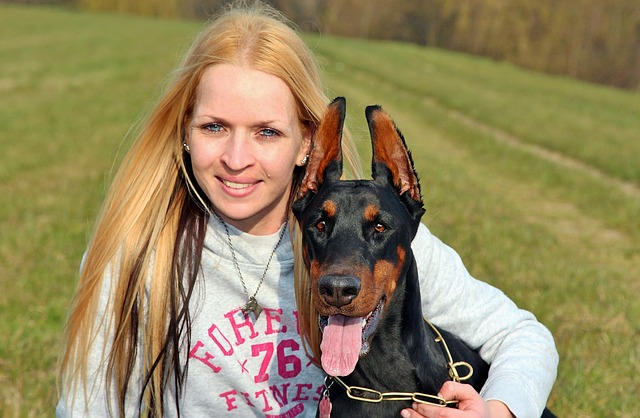
If your pet’s anxiety is extreme, working with a trainer is a good way to help ease your dog’s separation anxiety. However, leaving an article of clothing with your scent on it can make a big difference in your dog’s anxiety level, especially in dogs with only mild to moderate separation anxiety.
One snuggly way to do this is to fold your garment up in the Project Play™ Comfort Cuddler™! It’s a super soft, plush toy with a pocket for a garment that smells like you, created for this exact purpose!
(H/T: Science Direct)
Biyernes, Oktubre 20, 2017
Search And Rescue Saturday–A Working Dog
Mr. Taleteller Tales and Tails - The hilarity of everyday life
It’s been quite awhile since this topic has come up but I thought that we could revisit it today. Leaving with a working dog. Their behavior while they are growing up. Time and time again while we do public events people ask how was he as a puppy? Although I refrain from saying, “Not quite [...]
The post Search And Rescue Saturday–A Working Dog appeared first on Tales and Tails.
Puppy Hiding
Watch on YouTube here: Puppy Hiding
Via https://www.youtube.com/channel/UCrTpN0pjaKZSg5mkA-Z3-bA/videos
The 10 Best Small Dogs For Kids
Are you thinking about getting a dog for your family, but you’re worried about getting one that won’t tolerate your children? While larger dogs are less fragile and less likely to be accidentally injured, there are some small breeds that do well with children. Keeping in mind that dogs don’t come with guarantees and any dog needs training, here are 10 small dog breeds that do well with kids.
#1 – Beagle
The Beagle is a friendly, happy dog with short hair. They do need a lot of exercise, but much of this can be provided by playing with the kids. Beagles are scent hounds and tend to follow their nose, so your backyard should have a solid fence to prevent them from wandering off.
#2 – Maltese
Bred to be companion dogs, the Maltese makes a great addition to families. While these tiny dogs may be snappy or get injured by toddlers, they adore older kids. The Maltese gets by with short walks outside and brief runs inside your house.
The 10 Most Cuddly Dog Breeds
Brushing Your Dog’s Teeth With Coconut Oil – Is It A Good Idea?

Chances are, if you love a dog, you’ve heard of the importance of dental health. Keeping a clean mouth can prevent a host of painful, even deadly diseases. But when it comes to implementing an oral hygiene routine, where does a pet parent start?

Tartar-busting chews are a wonderful, easy way to cut down on buildup, but nothing beats a good old fashioned tooth-brushing. And when it comes to choosing a toothpaste, a healthy, completely natural option is to simply use coconut oil!

There are a ton of benefits to using this tropical oil to clean your canine’s teeth. First off, it’s quite possibly already in your pantry. Second, it’s all natural – no chemicals or dyes in this stuff. Third, it tastes great to your dog. But last and most importantly, coconut oil can fight dental disease.
Due to its anti-microbial properties, coconut oil helps eliminate the harmful bacterial that live in your pup’s mouth, which helps prevent plaque from forming. Less plaque means less tartar. Brushing with coconut oil can be just as good as brushing with a pet-safe toothpaste (but always talk to your vet about it first).
Even better, it’s good for them in so many ways!

In addition to cleaning your pup’s chompers, coconut oil can help immune function and digestion, improve skin and coat, and support joints. As an added bonus, using it on your pooch’s teeth can help freshen their breath!
Is it a good idea to use coconut oil to brush your dog’s teeth? In short, yes!
If you don’t already have some coconut oil to get brushing with, our new Project Paws® Organic Virgin Coconut Oil is a great option! Even better – it’s the only coconut oil on the market that provides healthy meals for shelter dogs with each purchase.
These statements have not been evaluated by the Food and Drug Administration. This product is not intended to diagnose, treat, cure, or prevent any disease. The information on this website is not intended to replace a one-on-one relationship with a qualified healthcare professional.
The 10 Most Cuddly Dog Breeds
5 Ways To Help Your Chow Hound Feel Fuller Longer

Some pups just never seem satiated. Every time you walk past the treat jar they are on your heels hoping for a snack. There are several reasons why a dog may feel the need to eat outside of meal times, including their own evolutionary history. Wolves and wild dogs are “opportunistic scavengers,” meaning they eat what they can because their next meal is never guaranteed.
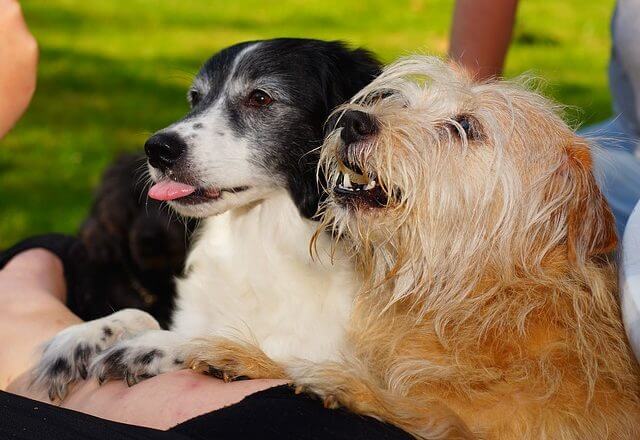
In order to determine the best way to feed your chow hound, you must first understand that all dogs eat differently, and that eating styles can change from day to day. Just like humans, dogs may overeat or stop eating alltogether in times of stress. They may also beg for food when what they really need is attention – remember, food is not love!

Consider these 5 tips to help your pooch feel fuller longer.
1. Know your dog’s body condition score.
Veterinarians use a basic system to determine if a dog is underweight, healthy, overweight, or obese. The body condition scale runs from one to nine, with one being a severely underweight/emaciated dog and nine being an extremely obese pooch. A score of four – six typically represents a healthy pup with a visible abdominal tuck and ribs that are easily palpated, but not visible.
If your dog is maintaining a healthy body condition score, but still begging for food, chances are he isn’t really hungry and may just need some extra attention.

2. Offer positive alternatives to food.
Dogs often crave food simply because it tastes good and they enjoy eating it. Giving in to begging will only encourage treat-seeking behavior in the future. If your dog is searching for a snack despite having already eaten a full, healthy meal, consider diverting his attention with other positive activities. Going outside for a walk, a game of fetch, or a relaxing brush-out could be just what your dog needs to satisfy his craving.

3. Avoid foods that attempt to satiate dogs with placebos.
Some savvy pet food manufacturers attempt to bulk up their kibble using excess air or water. While these tricks may help your dog feel more sated in the short-term, the feeling dissipates rather quickly. If your dog always seems to be hungry soon after mealtimes, choosing a higher fiber diet may be the solution.

4. Consider a higher fiber diet.
High fiber foods are best for giving dogs a lasting sense of fullness. Fiber cannot be digested, so instead of breaking down, it stays with them throughout the digestion process. Another benefit is that increasing the fiber content does not have to add lots of extra calories.
Ask your veterinarian to recommend a balanced diet that is high in fiber while still meeting your dog’s other nutritional needs.

5. Trade out dog treats for healthy, fiber-rich fruits and vegetables.
Veggies like zucchini, cucumbers, green beans, carrots, celery, and broccoli, and fruits like apples, blueberries, strawberries and raspberries are all excellent sources of fiber. While most veggies can be given freely or added to meals, carrots and fruits should only be given in moderation due to the excess sugar content.
Many pet parents chop fruits and veggies into bite-size pieces to be given in place of high-calorie dog treats – you can even freeze the extra portions for later use!
H/T to PetMD
How To Use Coconut Oil For Your Dog’s Skin Problems

Coconut oil can provide many benefits for dogs when used to supplement their diets, but did you also know that it can help a multitude of skin issues when applied topically?
The ultra-moisturizing oil promotes healing with its antibacterial properties. When rubbed onto your pup’s skin, it can also help relieve allergies, eczema, and itchiness, according to Healthy Pets by Mercola. It can also help your pup’s body with minor issues such as small cuts, stings, and even hot spots, by providing a protective barrier over the lesion while it heals.

A light layer of oil added to their coats can leave their fur soft and shiny. It’s also a great way to moisturize your pup’s nails, especially for older dogs whose nails are getting brittle.
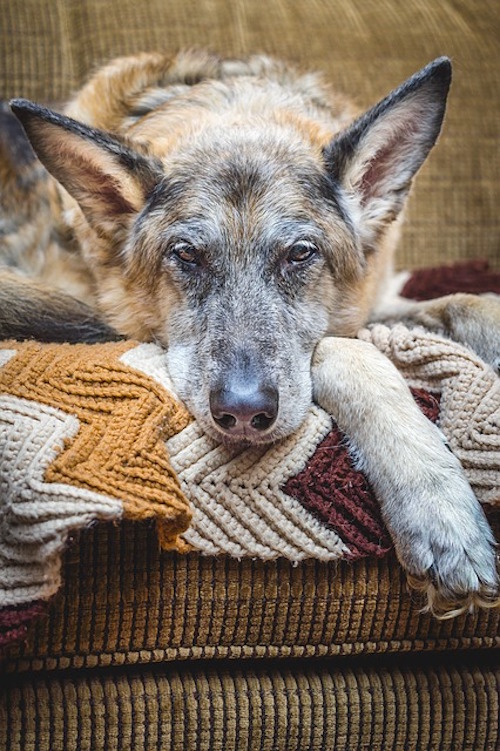
In general, you can rub some coconut oil right on the affected area you wish to soothe. PetMD explains that the best way to apply it to your canine’s fur is to start by using a small amount (too much, and they’ll get greasy). Rub it between your hands and smooth it onto their fur, then down to the skin with your fingertips. Your pooch will love the relaxing massage!

There is, of course, the problem of your dog licking up the beneficial “ointment.” As long as the oil gets a chance to absorb, it’ll have a positive effect even if your dog licks it off eventually. It’s a bonus that dogs actually benefit from consuming coconut oil – an all-natural solution is always the best, in our opinion!
This all-natural, multi-use product can boost your pup’s health inside and out. Consider adding it to your their healthy routines.
If you don’t already have some coconut oil in stock, our new Project Paws® Organic Virgin Coconut Oil is a great option! Even better – it’s the only coconut oil on the market that provides healthy meals for shelter dogs with each purchase.
These statements have not been evaluated by the Food and Drug Administration. This product is not intended to diagnose, treat, cure, or prevent any disease. The information on this website is not intended to replace a one-on-one relationship with a qualified healthcare professional.
The 10 Most Cuddly Dog Breeds
Woman Discovers Dog She Thought Was Euthanized Is Alive – 5 Months Later
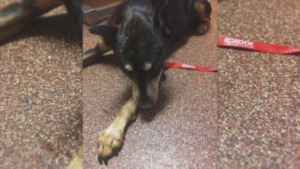
Imagine being told that your 15-year-old dog, whom you’ve had since he was a little puppy, needs to be euthanized because he was so sick. Now, imagine discovering 5 months later that he had not been euthanized like you had been told, but was actually living with a former employee of the veterinary clinic you had taken your dog to.
Keri Levy of Howell, NJ doesn’t have to imagine. That’s exactly what happened to her family.

In May of this year, Dr. Menez of Briarwood Veterinary Hospital told Levy that Ceaser, her Miniature Pinscher, was suffering from Cushing’s disease, an endocrine disorder. He suggested the pup be euthanized due to how much his quality of life had already gone downhill. Levy left Ceaser at the hospital under the impression that he would be euthanized and she received a call later that evening saying that he was “at peace” and that she could come pick up his collar.
Five months later, Levy received an anonymous tip that Ceaser was actually living with a former employee of Briarwood. After she reached out to authorities to report that her dog had been stolen, the person returned Ceaser in worse shape than he had been in 5 months ago. He had received no veterinary care and had lost 10 pounds since Levy had last seen him.
Levy and her mother spent about an hour with Ceaser while he was checked out by another vet before he was finally assisted over the Rainbow Bridge and given peace, once and for all.
Briarwood is currently under new ownership, and neither Dr. Menez nor the person who stole Ceaser work there anymore. Police are deciding whether or not to file charges.
Aspin (Chucky) vs Dinosaur (T-Rex)
Watch on YouTube here: Aspin (Chucky) vs Dinosaur (T-Rex)
Via https://www.youtube.com/channel/UCrTpN0pjaKZSg5mkA-Z3-bA/videos
Wrongly Accused Pit Bull Sentenced To Death Is Finally Set Free

You may have heard of Hank, a Pit Bull mix who was wrongly accused of killing two goats and injuring a pony, along with another dog. You may have even signed a petition on his behalf. Because he is, in fact, innocent, despite being sentenced to death.
You see, Hank, previously named Tank, was in the wrong place at the wrong time. According to a synopsis on Care2, a petition site, Hank was living with his former family when he and his mixed-breed mother entered a neighbor’s property in April of 2016. The end result was an attack on their livestock, and when police arrived, both dogs looked guilty. But over time, new evidence emerged proving that Hank was innocent.
The Care2 page says:
“Hank was in the vicinity at the time of the act, but dashboard cam captured video at the time of the act which proves Hank was not involved. Witnesses testified that Hank did not participate and had no blood on him after the act. There is a photo of Hank sitting in the police car 30 minutes after the attack that shows no blood on his muzzle (he is a light fawn & white color)….The Owner of the livestock determined after discovering the video some time later that Hank was innocent and subsequently changed his statement, and testified that he does not want the dog killed, and refuses to press charges. “
Hank’s family at the time didn’t testify on his behalf in court, assuming that his innocence wouldn’t be questioned. Instead, they took the mama dog and fled the state, knowing that she’d be found guilty. Meanwhile, Hank remained in the custody of the Lewis County Animal Shelter to await his fate. However, multiple staff members weren’t convinced he was vicious.
A story by The Chronicle explains:
Tank was seized by Lewis County and designated as dangerous. However, county and animal shelter staff came to believe Tank was not dangerous. They attempted to find rehabilitation opportunities, and failing that, changed his name to Hank and adopted him to Propp-Estimo’s family, with no mention of his previous ‘dangerous’ declaration.
So, he went to live with Jann Propp-Estimo and her family in January 2017.
For the next few months, the Propp-Estimo’s enjoyed their fun-loving, sweet dog Hank, who even loved the company of their 9-year-old grandson. But when the prosecuting attorney learned that the “potentially dangerous” pup had been adopted rather than euthanized, he pursued action. On May 9th, less than four months after Hank was brought into his new home, he was seized by law enforcement to await his death for a crime he had not committed over a year prior.
From then on, the Pittie went from living like a beloved family member to living like a prisoner. Care2 says:
“They visit him now daily, behind bars, and they have spent thousands fighting for Hank’s return without the “dangerous dog” label. (This case is still on appeal.) From May 9, 2017 until the present time Hank has remained incarcerated at the Lewis County Animal Control Shelter in isolation. He is not exercised, and only allowed visitation by the family through the chain-link bars that are his prison. He doesn’t know what he supposedly did, why he was taken away from his family and remains in prison.”
Over that time, Hank’s family not only fought for his innocence, they requested cage-free visits, which were denied.
Hank’s story went viral, garnering hundreds of thousands of signatures of support, and his family attended several court hearings on his behalf.
Then finally, it was settled: the fact that the pup was adopted out after being labelled as “dangerous” shows inconsistencies with the shelter staff that ultimately allowed Hank to go home this week. Additionally, animal rights attorney Adam Karp noted that the family, who initially knew nothing about the incident, should not be penalized by losing the dog their four-legged family member.
Now, Hank is where he’s supposed to be. Although there’s a chance that the case could land back in court, we’re hoping he’ll stay home for good. The Chronicle reports:
“The decision leaves an opportunity for either Lewis County or Propp-Estimo to bring the case back to Lewis County District Court to challenge Hank’s status as ‘dangerous.’
However, it also provides an opportunity for [animal rights attorney] Karp to request a permanent injunction sparing Hank’s life in a future hearing in Skinder’s court.”
We hope that Hank and his dedicated family have proved once and for all that he’s not a dangerous animal, but rather a gentle and loving companion. Best of luck to this brave pup, and to his humans, who never lost their faith in him.
For more details on the case, see a story by The Chronicle.
(h/t: Care2 / The Chronicle )
They call it crack for dogs. Except it’s healthy!
Here’s How To Socialize Your Adult Rescue Dog

Behaviorists say the most crucial time for socialization in a dog’s life is between three weeks and four months old. That’s when puppies develop their personalities, and they’re most likely to adapt to certain skills and behaviors. But what happens when a puppy is born a stray or grows up in a less-than-ideal environment?
Some of the dogs that end up in shelters never have the chance at socialization. They can grow to be fearful, timid, and wary of new things, and this can affect their chances of fitting in with a new family.
If this sounds like an adult rescue dog you recently adopted, don’t worry. It’s never too late to start socialization.

The Challenge
The difference between socializing a puppy and working with an adult dog is that with a puppy, you have a blank slate. They have no preconceived notions about what’s going on around them, and while something might be initially scary or startling, there’s nothing from their past to make them uncomfortable.
An adult dog’s life experience often works against them. They’ve most likely encountered many of the things on your socialization list already, and if it was a bad experience, you’re already a step behind. New people, vehicles, excited children—you have to work not knowing what kind of negative reinforcement they experienced in the past. Some adult rescue dogs have also grown out of that puppy stage when they’re most open to new things. They’ve grown to be wary of the world.
The Solution
The sooner you accept the fact that socializing an adult rescue dog will take longer and require more effort than it would with a puppy, the better off you’ll both be. If you expect too much too fast, you’ll only slow everything down with unneeded stress and frustration. It may take weeks to notice improvement, but these tips will help.
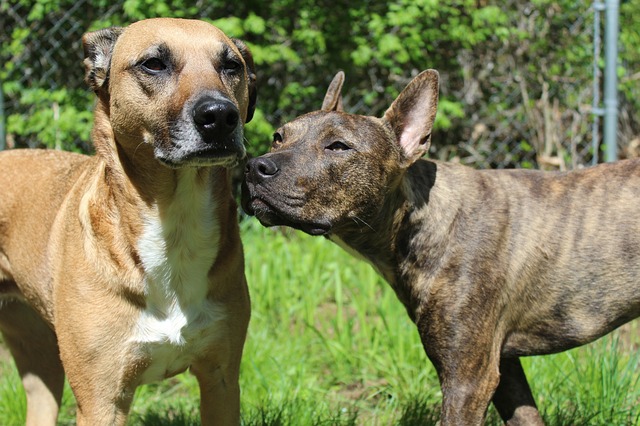
#1- Start at a Distance
Things are always more scary up close. If your pup is showing signs of being afraid of other dogs, start by bringing them to a spot where he can see the dogs at a distance, but there’s a fence or a lot of land separating them. Take time building his confidence from far away before gradually moving closer.
#2 – Choose a Focus
With a puppy, you could end up introducing them to several new things a week. But with an adult rescue dog, things will happen slower. Focus on one specific part of socialization at a time. If you want them to get used to cars, for example, don’t do anything else new until they’ve shown improvement with that particular hurdle.

#3 – Ignore Unwanted Behavior
If your dog runs under the bed every time the vacuum comes out, ignore them. It sounds harsh, but coddling them will only reinforce their thought that the vacuum is a scary monster. Scolding and showing disapproval is also the wrong move. Your best strategy is to act like everything is normal. Leave the vacuum in the room while you do something to subtly entice your dog to come out. Pick up their favorite toy or take the treat bag out of the cabinet. When they come out, reward their bravery.
#4 – Pick Your Battles
As their new owner, you might not know what kind of past your rescue dog is dealing with. They could have been abused or neglected, and if they were at the shelter, you know they were abandoned. It’s your job as their adopter to show them a better life full of love, comfort, and a sense of security. If your dog is terrified of meeting men, there’s probably a good reason. When they cower at every big dog they see, their fear may not be as irrational as it looks.
You want your dog to be well-equipped to face every situation they encounter, but sometimes you need to follow their lead. If they’re afraid of something, don’t force it. Play together in the backyard instead of the dog park. If they don’t like strangers, explain that to guests and ask them to leave the dog alone. You can continue to work on these issues over time, but your ultimate responsibility is to do what’s best for your dog.
Dog Mom’s Heart Literally Breaks After Losing Her Beloved Pup

For Texas dog lover Joanie Simpson, the loss of her beloved Yorkie Meha was almost more than she could bear.
She suffered what doctors at first believed to be a heart attack, but later determined was a rare condition known as Takotsubo cardiomyopathy – or broken-heart syndrome. The phenomenon, which mimics the symptoms of a heart attack, usually occurs in the wake of an extreme emotional event such as the loss of a child or spouse.

A study published in the New England Journal of Medicine in 2005 states that Takotsubo cardiomyopathy is caused by a flood of stress hormones that “stun” the heart into producing painful, frightening spasms.
At the time of her hospitalization, Simpson was dealing with several difficult life changes including a complicated property sale and family financial and medical concerns. But none of these issues compared to losing Meha.

Simpson described the 9-year-old dog as “like a daughter” to her. After a long battle with congestive heart failure, Meha was having more bad days than good. Simpson booked an appointment to have her put to sleep, but cancelled at the last minute when the dog seemed to rally. The next day, Meha died at home.
“It was such a horrendous thing to have to witness,” Simpson told The Washington Post. “When you’re already kind of upset about other things, it’s like a brick on a scale. I mean, everything just weighs on you.”

The fact that 62-year-old Simpson’s case of broken-heart syndrome was induced by the death of her dog serves as further evidence that the stress of losing a pet can be just as devastating as the grief we suffer at the loss of a human loved one.
A recent study found that pet owners caring for chronically ill animals are susceptible to the extreme stress and anxiety of “caregiver burden,” a notion that does not surprise Simpson at all.
“The kids were grown and out of the house, so she was our little girl.”

Simpson has recovered from her frightening ordeal, although she must now take heart medication. She has yet to open her heart and home to another dog, but she is looking and says the inevitable grief is worth the joy that comes with having a pet.
“It is heartbreaking. It is traumatic. It is all of the above,” Simpson said. “But you know what? They give so much love and companionship that I’ll do it again. I will continue to have pets. That’s not going to stop me.”
H/T to The Washington Post
Top 3 Dog Health Issues Supplements Can Help With

For a dog owner, keeping a beloved pet healthy is always a priority. From their teeth and bones to skin and fur, your pup relies on specific nutrients to keep them looking and feeling their best. When your dog doesn’t get enough of those vital ingredients in their regular diet, supplements fill in the gaps. Whether your pet suffers from a specific health issue or you want to prevent future problems, supplementing their diet with certain vitamins and minerals may help. Here are three of the most common canine health issues you can address through supplements.

#1 – Tooth Decay
It’s recommended that pet owners brush their dogs’ teeth once a day. But for most busy pup parents, that’s an unrealistic goal. Dogs aren’t always cooperative, and it’s hard to keep up with all that plaque and tartar. Supplementing your dog’s diet with specially-made dental sticks will help keep teeth clean.

Dogs develop cavities in the same way humans do—through the build-up of tartar on teeth—and dental sticks are designed to scrape away the gunk that coats your dog’s teeth. The best dental sticks include ingredients that also contribute to other healthy bodily functions.
#2 – Joint Pain
As your dog ages, you may notice they’re slower to move around. Joint pain is probably to blame. Dogs develop arthritis like humans do, and the degenerative disease can keep them from doing the things they love.

To help ease the pain and promote better joint health, you can give your dog a supplement rich in Omega-3 fatty acids. Research shows Omega-3s are an effective way to decrease inflammation in joints. Krill oil and fish oil are both supplements you can add to your dog’s dish, although krill is a better way to go as fish oil can be dangerous.
#3 – Skin and Coat Problems
Dry skin, itchy rashes, rough fur, and excessive shedding are all health issues affecting your dog’s well-being. Sometimes itchy skin is the result of an allergy, but it’s also a sign of nutritional deficiency. Dogs with dull, rough coats often respond well to more Omega-3 fatty acids in their diets. It helps fur look shinier and feel smoother. Beneath their fur, a daily supplement will also help moisturize the skin and relieve the itch. Supplements made with krill oil have phospholipids that your dogs’ bodies use to generate cell membranes and keep their skin healthy.
The best way to determine if your dog would benefit from a supplement is to ask your vet. Sometimes their bodies need help producing more of a certain nutrient, and other times—like with Omega-3 fatty acids—they’re completely dependent on their diet to deliver what they need. If your dog’s food isn’t providing a perfectly well-balanced diet, consider adding a little something extra to give them a well-deserved boost to their health and happiness.
These statements have not been evaluated by the Food and Drug Administration. This product is not intended to diagnose, treat, cure, or prevent any disease. The information on this website is not intended to replace a one-on-one relationship with a qualified healthcare professional.
